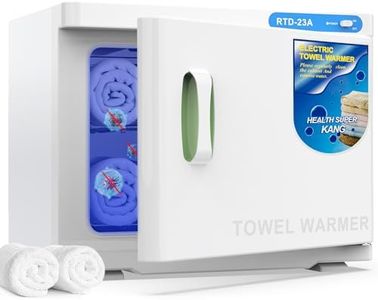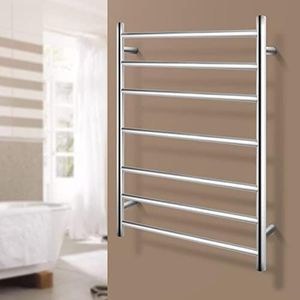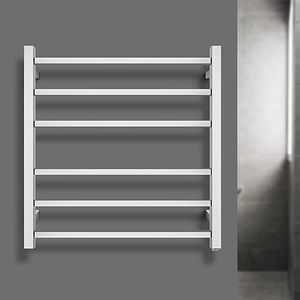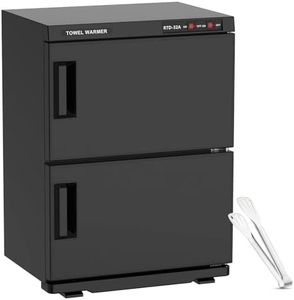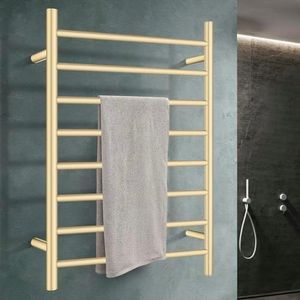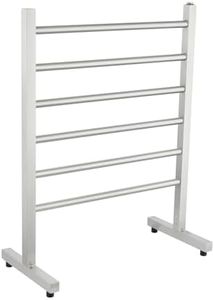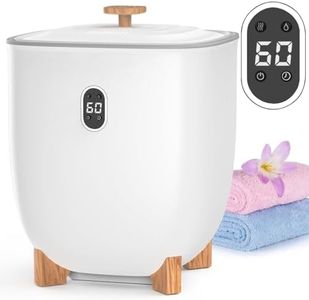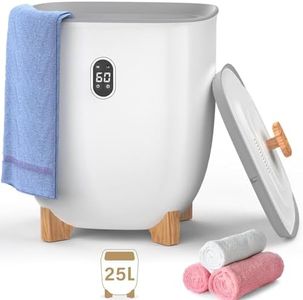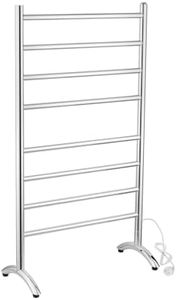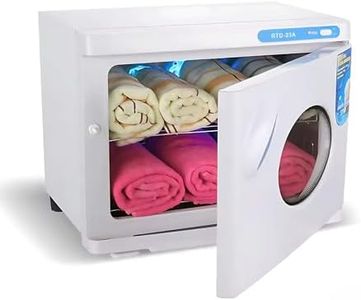We Use CookiesWe use cookies to enhance the security, performance,
functionality and for analytical and promotional activities. By continuing to browse this site you
are agreeing to our privacy policy
10 Best Outdoor Towel Warmers
From leading brands and best sellers available on the web.Buying Guide for the Best Outdoor Towel Warmers
Choosing an outdoor towel warmer can make your time outside much more comfortable, whether you're enjoying your pool, hot tub, or simply want to indulge in a warm towel after spending time on your patio. It's important to find a model that works for your environment and personal habits. Understanding what features matter most will help you select a towel warmer that performs well, lasts long, and fits into your outdoor setup.Heating MethodThe heating method refers to how the towel warmer generates heat, which can typically be electric or hydronic (hot water-based). Electric models use a built-in heating element plugged into a power source, while hydronic ones are connected to your plumbing. Electrically heated versions are often easier to install and more flexible for outdoor use, while hydronic types may be more energy-efficient but need a more permanent and complex setup. If you want something easy to move and simple to set up, electric may be better. For a built-in, long-term solution near pools or outdoor showers, hydronic might be the best fit.
CapacityCapacity tells you how many towels or items you can warm at one time. Some warmers are designed for just one or two towels, while larger units can handle several. If you frequently entertain or have a large family using the pool or hot tub, a bigger capacity is beneficial. Single or smaller units are suitable for solo use or when space is limited; larger shelves or racks work well for multiple users or for warming larger items like robes.
Material and DurabilityMaterial and durability are important because outdoor conditions can be tough on appliances. Most outdoor towel warmers use stainless steel or powder-coated metal, which resist rust and corrosion from weather and moisture. Stainless steel offers excellent longevity and is easier to clean, while powder-coated options can come in different colors and styles. Consider the climate in your area—high humidity or regular rain means you should focus on rust-proof and weather-resistant materials to ensure your towel warmer lasts for years.
Mounting TypeMounting type refers to how and where the towel warmer is installed. There are freestanding models, which you can move around easily, and wall- or floor-mounted types that are secured in a fixed spot. For flexibility and when you expect to move the warmer, freestanding is useful. For a permanent solution that stays out of the way and is always ready, wall-mounted types work best. Your outdoor space layout and where you would like to access warm towels will help guide this choice.
Safety FeaturesSafety features are crucial since the unit will be used around water and exposed to outdoor elements. Important safety options include automatic shut-off, timers, and overheat protection. These features prevent accidents, conserve energy, and give you peace of mind when using the warmer in damp environments. If kids or pets will be around, or if you'll be leaving the unit unattended, extra safety features are highly recommended.
Heating TimeHeating time is how long it takes for your towel to reach a comfortable, warm temperature. Some units heat up in a few minutes, while others may take 15–30 minutes. Faster heating is handy for those spontaneous dips or when you forget to turn it on early. If you are good at planning ahead, a slower heater may work fine, but for instant comfort, look for quicker warm-up times.



